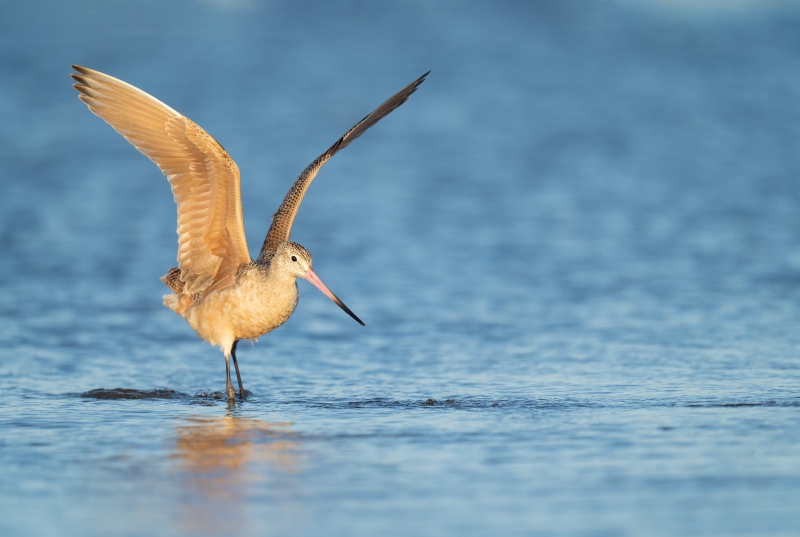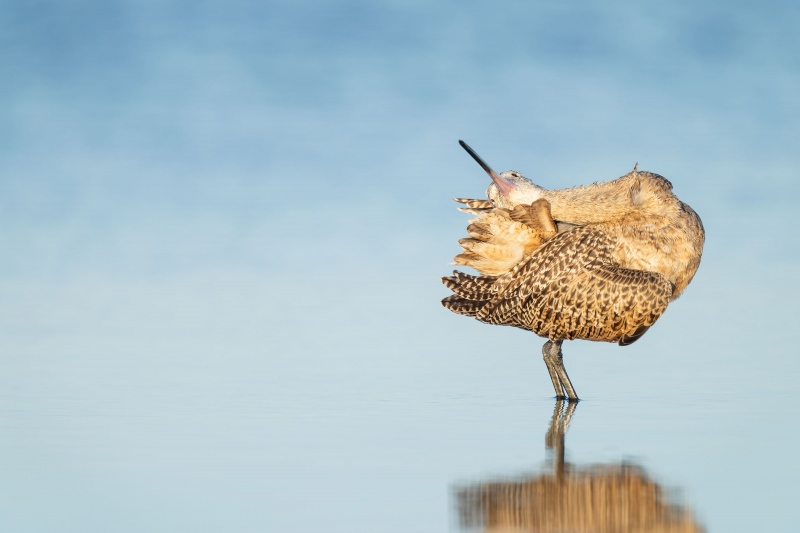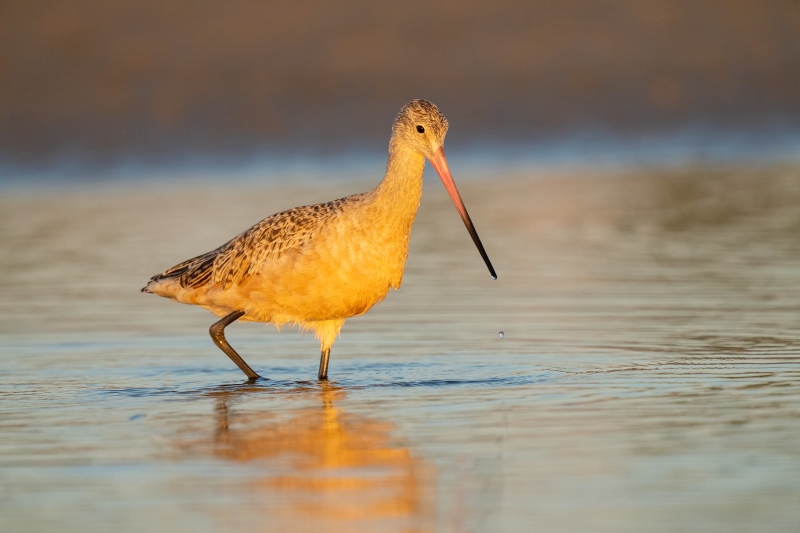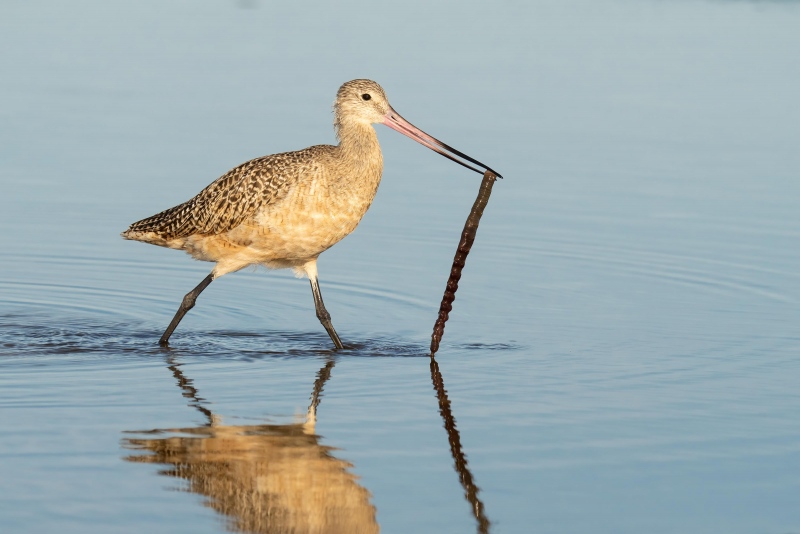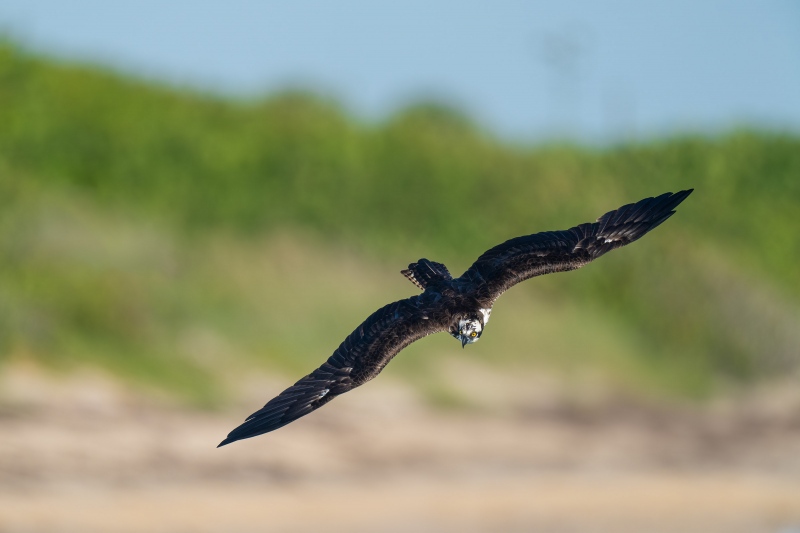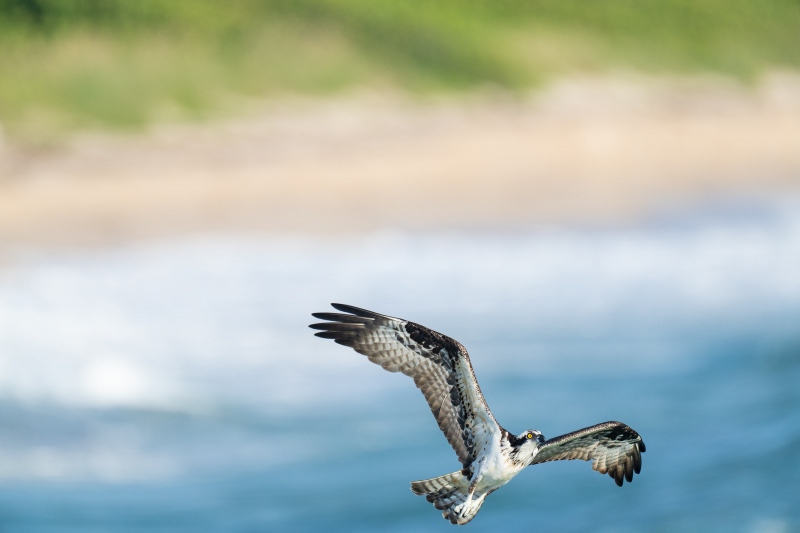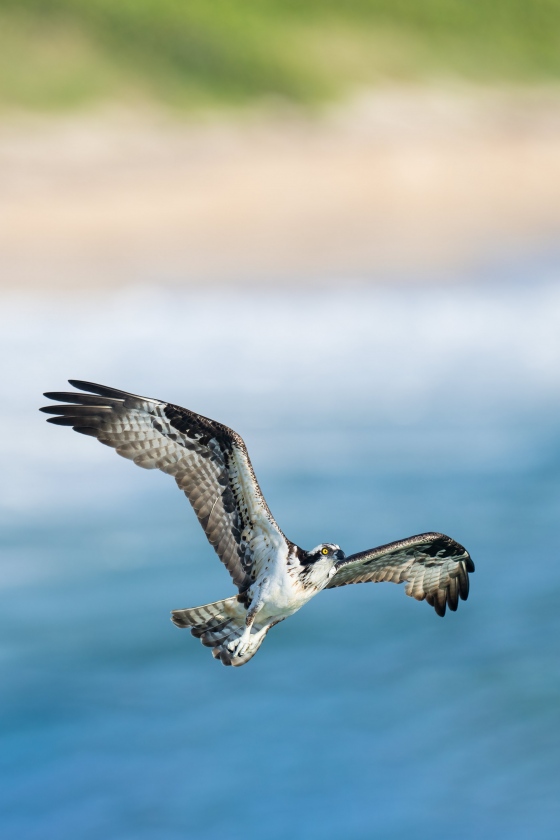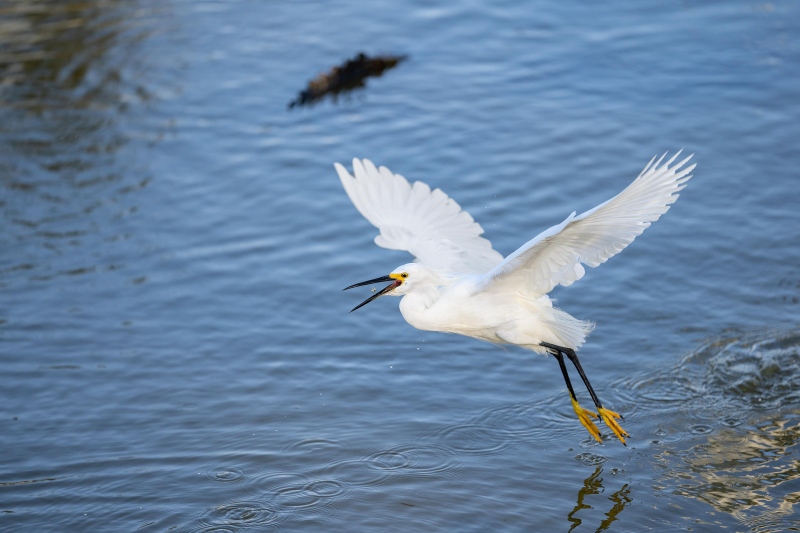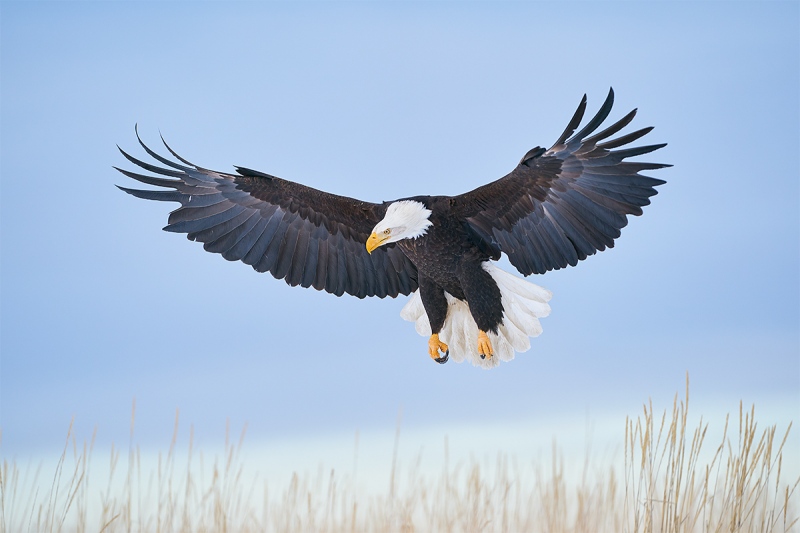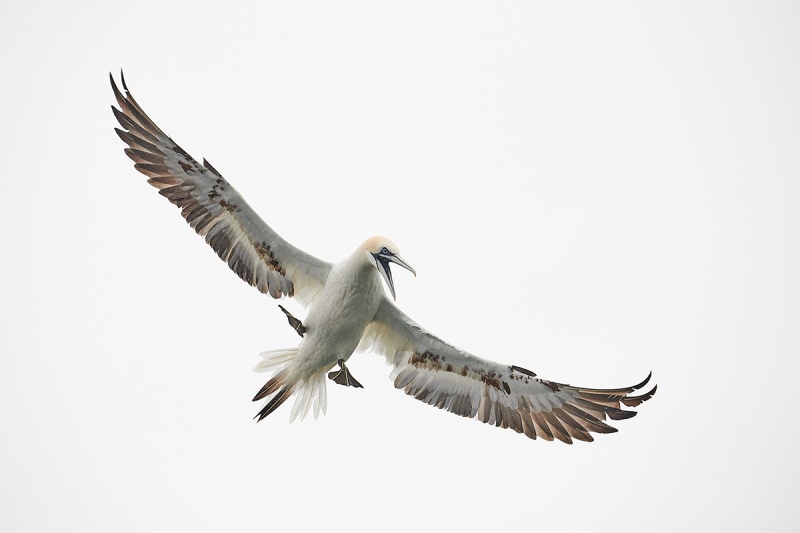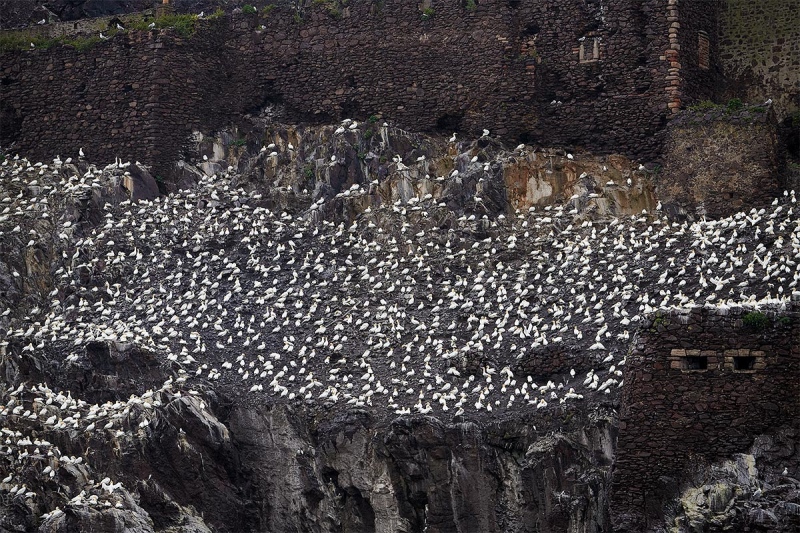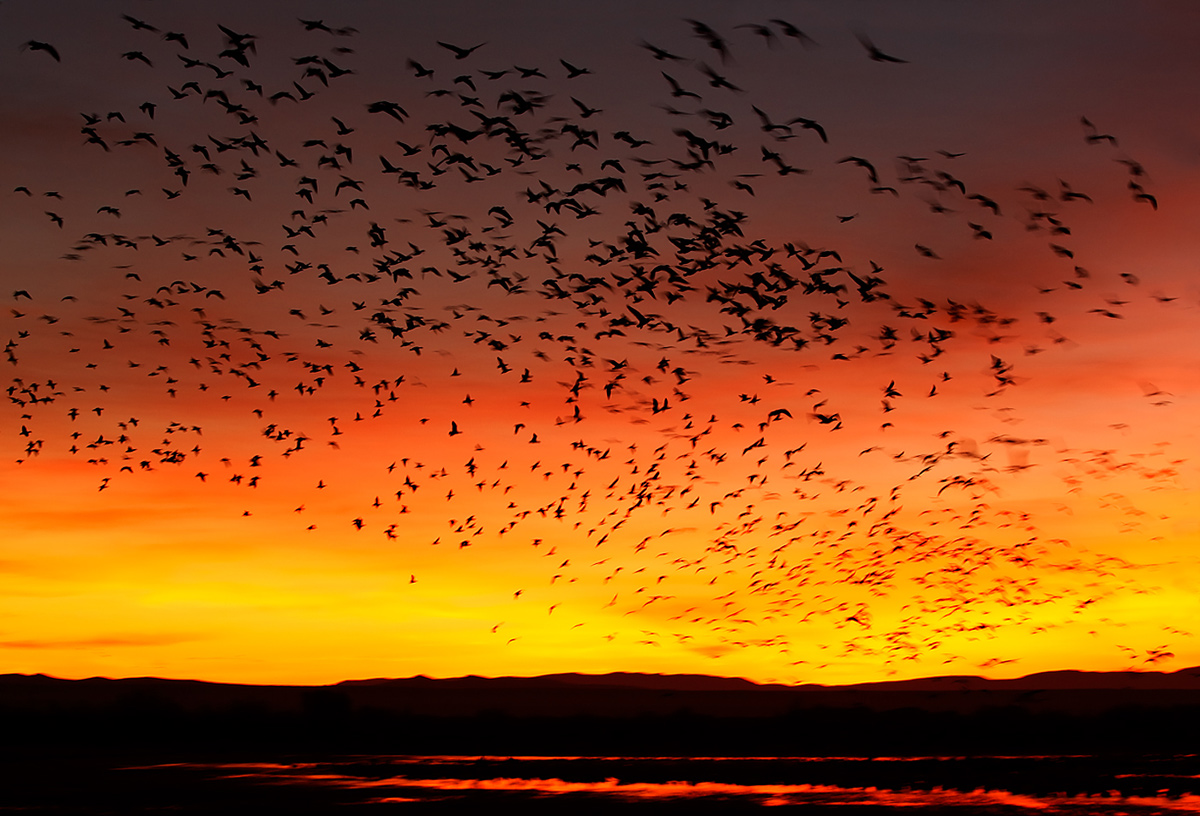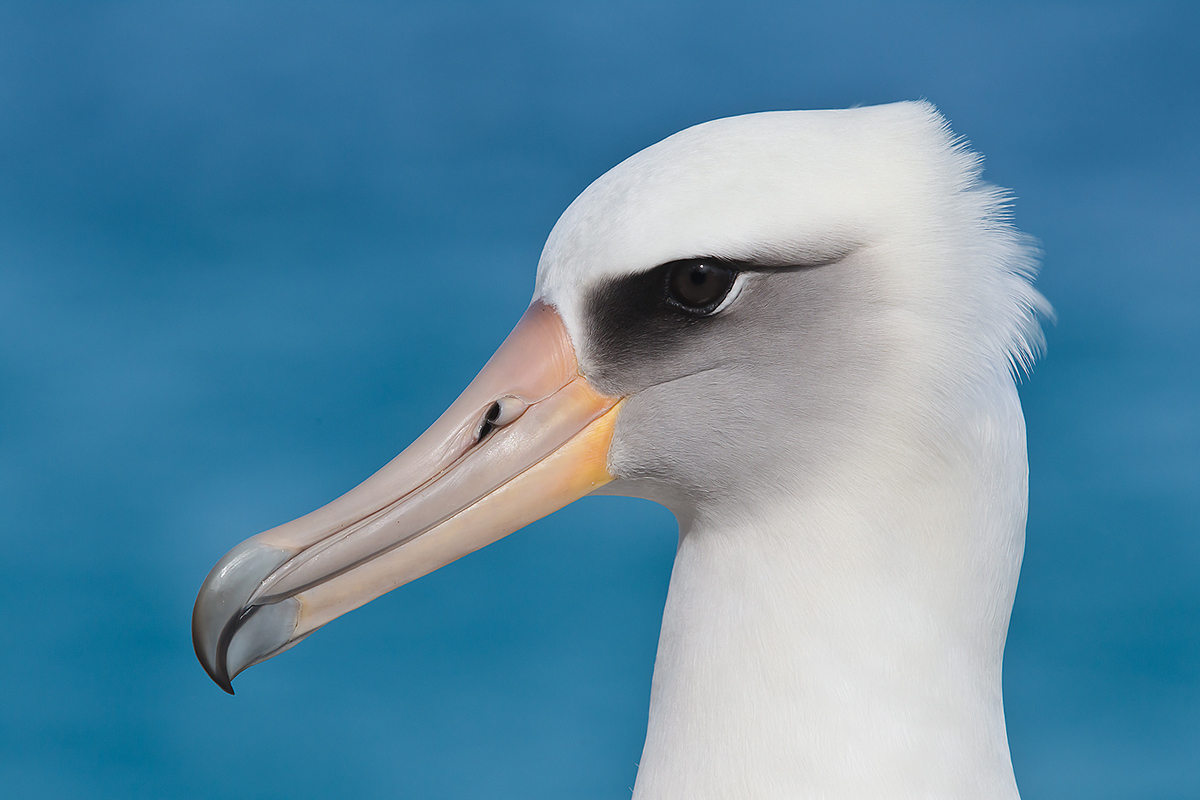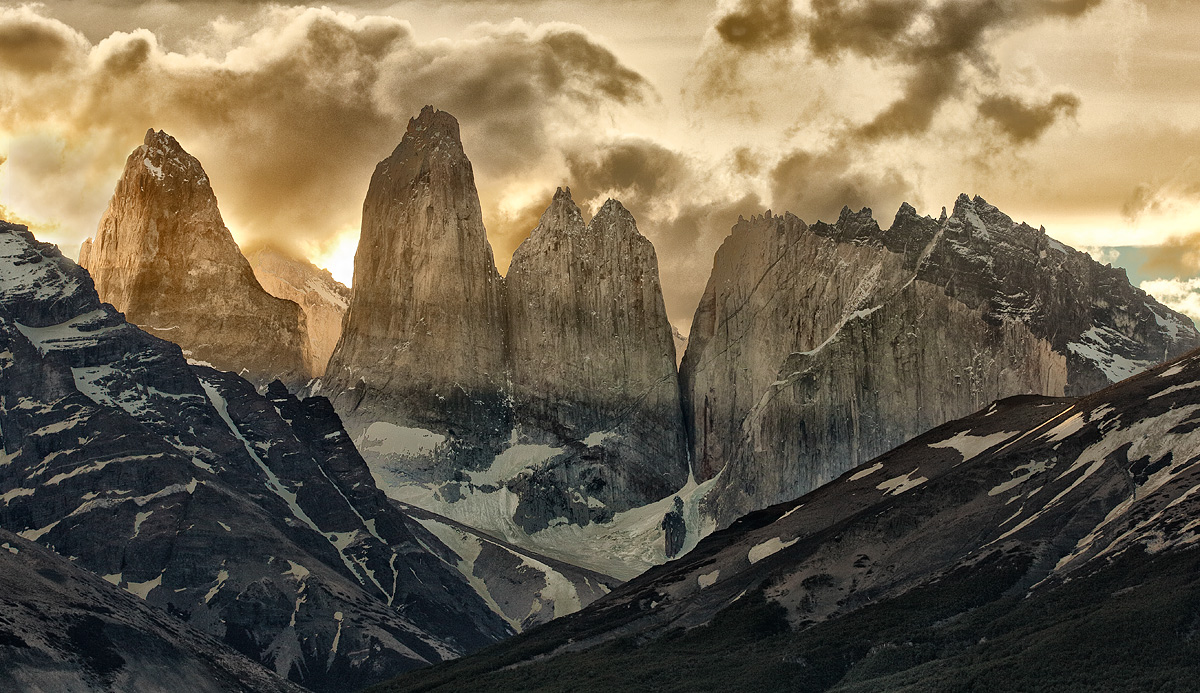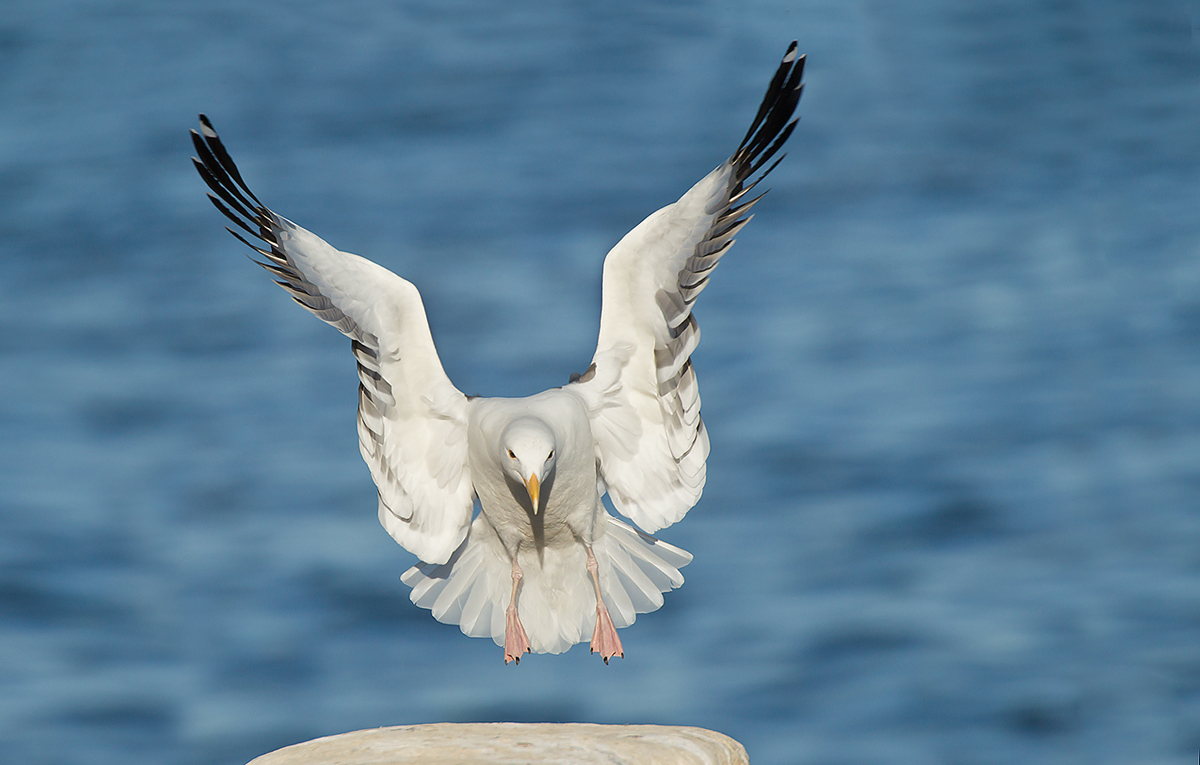October 22nd, 2021 Image Questions
Which image features the warmest light?
Which image features the coldest light?
Which is the strongest image? Why did you make your choice?
What’s Up?
The mornings on the DeSoto IPT have continued to be fabulous. In addition to the shorebirds, wading birds, gulls, and terns, about 150 White Pelicans flew in on Tuesday at about 11am. On Wednesday and Thursday with east winds and sun in the afternoon forecasts, we opted to do a one very long photo session and take the afternoon off. Our efforts paid off in spades when the pelicans arrived en masse and provided a great variety of opportunities for all.
With the supply pipeline opening up, bird photographers are flocking to the SONY Alpha a1/200-600 G lens combo. Six new folks joined the SONY Info and Updates group in the last three days! The word is out …
Today is Friday 22 October 2021, the last day of the third DeSoto Fall IPT. We are looking forward to another great morning. The forecast southeast winds are perfect for bird photography, especially for photographing birds in flight. Wherever you are, and whatever you are doing, I hope that you too have a great day. This blog post took about two hours to prepare (including the the time spent on the four image optimizations.
Remember that you can find some great photo accessories (and necessities, like surf booties!) on Amazon by clicking on the Stuff tab on the orange/yellow menu bar above. On a related note, it would be extremely helpful if blog-folks who, like me, spend too much money on Amazon, would get in the habit of clicking on the Amazon logo link on the right side of each blog post when they shop online. As you might expect, doing so will not cost you a single penny, but would be appreciated tremendously by yours truly. And doing so works seamlessly with your Amazon Prime account.
Please remember that if an item — a Delkin flash card, or a tripod head — for example, that is available from B&H and/or Bedfords, is also available in the BAA Online Store, it would be great, and greatly appreciated, if you would opt to purchase from us. We will match any price. Please remember also to use my B&H affiliate links or to save 3% at Bedfords by using the BIRDSASART discount code at checkout for your major gear purchases. Doing either often earns you free guides and/or discounts. And always earns my great appreciation.
Important Note
As an Amazon Associate, I earn a small percentage from qualifying purchases when you purchase from Amazon using any of the links on the blog. Huge thanks, BTW 🙂
Please Remember Also
With income from IPTs now close to zero, please, if you enjoy and learn from the blog, remember to use one of my two affiliate programs when purchasing new gear. Doing so just might make it possible for me to avoid having to try to get a job as a Walmart greeter and will not cost you a single penny more. And if you use Bedfords and remember to enter the BIRDSASART code at checkout, you will save 3% on every order and enjoy free second-day air shipping. In these crazy times — I am out at least forty to sixty thousand dollars so far due to COVID 19 (with lots more to come) — remembering to use my B&H link or to shop at Bedfords will help me out a ton and be greatly appreciated. Overseas folks who cannot order from the US because of import fees, duties, and taxes, are invited to help out by clicking here to leave a blog thank you gift if they see fit.
New and Better Bedfords Discount Policy!
You can now save 3% on all of your Bedfords photo gear purchases by entering the BIRDSASART coupon code at checkout. Your discount will be applied to your pre-tax total. In addition, by using the code you will get 2nd day air shipping via Fed Ex.
Grab a Nikon AF-S Teleconverter TC-14E III and save $14.99. Purchase a Canon EOS R5 and your discount will be $116.97. Purchase a Sony FE 600mm f/4 GM OSS lens and save a remarkable $389.94! Your Bedford’s purchase no longer needs to be greater than $1,000.00 for you to receive a discount. The more you spend, the more you save.
Money Saving Reminder
Many have learned that if you need a hot photo item that is out of stock at B&H and would enjoy free second-day air shipping, your best bet is to click here, place an order with Bedfords, and enter the coupon code BIRDSASART at checkout. If an item is out of stock, contact Steve Elkins via e-mail or on his cell phone at (479) 381-2592 (Central time). Be sure to mention the BIRDSASART coupon code and use it for your online order to save 3% and enjoy free 2nd-day air shipping. Steve has been great at getting folks the hot items that are out of stock at B&H and everywhere else. The wait lists at the big stores can be a year or longer for the hard to get items. Steve will surely get you your gear long before that. For the past year, he has been helping BAA Blog folks get their hands on items like the SONY a9 ii, the SONY 200-600 G OSS lens, the Canon EOS R5, the Canon RF 100-500mm lens, and the Nikon 500mm PF. Steve is personable, helpful, and eager to please.


Gear Questions and Advice
Too many folks attending BAA IPTs (remember those?) and dozens of photographers whom I see in the field and on BPN, are–out of ignorance–using the wrong gear, especially when it comes to tripods and more especially, tripod heads… Please know that I am always glad to answer your gear questions via e-mail.
The Star of the Shorebird Show
As the largest and most elegant of the commonly occurring shorebird species at DeSoto, Marbled Godwits provided a ton of action on the third Fort DeSoto Fall IPT. Now that the single Long-billed Curlew that was regular DeSoto visitor for a decade or so no longer shows up (or is likely deceased), the marbleds are indeed the stars of the show. Larger birds, in general, are easier to photograph than the smaller species in part because you can more easily get within range. I was a bit late getting on this bird as it flew in and acquired focus just as he touched down.
After-bath Preening
As we have seen here regularly, after a shorebird (or a gull or a tern) takes a bathe, it will usually jump into the air while flapping their wings. Almost invariably, they then head to the nearest shoreline to spend five or ten minutes preening. The behavior provides numerous incredible poses and behavioral chances.
1200mm Rarely Needed
The shorebirds at DeSoto are so ridiculously tame that you rarely need the 2X teleconverter. With east winds and clear skies forecast for every afternoon — wind against sun is very bad for bird photography, we photographed only on the first afternoon. After that, we did one very long morning session to maximize our chances.
For Image #3, I went to the extremely long focal length to create a portrait of a godwit on the far side of the main pool. The performance of the SONY 600 GM lens with the 2X TC and the a1 is simply amazing; AF performs perfectly and acquires quickly.
|
|
|
I created this image on 20 October 2021 on the first morning of the third DeSoto Fall IPT. While seated on damp sand I used the hand held Sony FE 200-600mm f/5.6-6.3 G OSS lens with the Sony FE 1.4x Teleconverter (at 375mm) and The One, the Sony Alpha 1 Mirrorless digital camera. ISO 1250. Exposure determined via Zebras with ISO on the rear dial: 1/2500 sec. at f/6.3 (wide open) in Manual mode. RawDigger showed that this image exposure was dead-solid perfect. AWB at 8:09am on clear sunny morning.
Tracking: Upper Zone/AF-C Bird/Eye Detection AF was active at the moment exposure and performed perfectly. Click on the image to view a hi-res version.
Image #4: Marbled Godwit with lugworm
|
Lugworm City!
The lugworm (Arenicola marina) is a large marine worm of the phylum Annelida. Its coiled castings are a familiar sight on a beach at low tide, but the animal itself is rarely seen except by those who, from curiosity or to use as fishing bait, dig the worm out of the sand. It is a favorite food of Marbled Godwit who will often work for minutes extracting the worms from their holes. The Black-bellied Plovers and Willets will almost always attempt to steal a just-captured lugworm from the larger godwits. They seem to be successful more than half the time. The lugworm in Image #4 was eventually stolen by a piratical back-bellied.
SONY Alpha a1 Set-up and Info Group
The SONY Alpha a1 Set-up and Info Group is going great guns as more and more folks chime in with thoughtful questions and experience-based answers. As the a1 is becoming more readily available, more and more folks are getting their hands on this amazing body. With two folks joining yesterday, we are now up to an astounding 83 lucky and blessed photographers! Early on, we discussed the myriad AF options. I gave my opinion as to the best one for flight and general bird photography. More recently, we have been in contact with folks at SONY sharing our thoughts, experiences, and frustrations with the EVF blackout problem.
All who purchased their Alpha a1 bodies via a BAA affiliate link will receive a free subscription to the Sony Alpha a1 Set-Up and Info Updates after shooting me their receipts via e-mail. (Note: it may take me several days to confirm B&H orders.) This same service may be purchased by anyone with an a1 body via a $150.00 PayPal sent to birdsasart@verizon.net indicating payment for Alpha a1 Info Updates. Alternatively, folks can call Jim weekdays at 1-863-692-0906 to pay via credit card. New members will receive composite e-mails that summarize all previous discussions.
Typos
With all blog posts, feel free to e-mail or to leave a comment regarding any typos or errors.
October 20th, 2021 Wanted to Buy
If you have a Canon 500mm f/4L IS II lens or a Canon EOS 7D Mark II sitting on a shelf and would like to get a good price for it — demand for both is up, please get in touch via e-mail.
Your Favorite?
Which of today’s two featured Osprey images is your favorite? All are invited to leave a comment and let us know why they made their choice. BTW, take a good look at Image #2 before scrolling down toe #2A; see if you can come up with a plan for re-crafting the image and creating a pleasing image design from the mis-framed original.
What’ Up?
With the supply pipeline opening up, bird photographers are flocking to the SONY Alpha a1/200-600 G lens combo. Five new folks going the SONY Info and Updates group in the last two days! The word is out …
Sebastian was pretty good on Monday morning; the big mullet run is on. Thanks to a very generous tip from YouTube rock star bird photographer Mark Smith, I was in the right spot from the get-go. After the action slowed down a bit, I got some nice head portraits of the always reliable Wood Storks.
The first morning of the third DeSoto IPT got off to a great start. We began with a predawn Snowy Egret feeding spree — can you say pleasing blurs? When the sun broke through the clouds on the Eastern horizon, we went to creating sharp images of the graceful white wading birds at high shutter speeds in butter light with blue water backgrounds. For the rest of the beautiful morning, we concentrated on a wide variety of shorebirds: Marbled Godwit, Willet, Red Knot, Black-bellied, Semipalmated, Snowy, and Piping Plovers, Western and Least Sandpipers, Sanderling, and Short-billed Dowitcher rounded out the cast.
Today is Wednesday 20 October 2021. Wherever you are, and whatever you are doing, I hope that you too have a great day. This blog post took about two hours to prepare.
Remember that you can find some great photo accessories (and necessities, like surf booties!) on Amazon by clicking on the Stuff tab on the orange/yellow menu bar above. On a related note, it would be extremely helpful if blog-folks who, like me, spend too much money on Amazon, would get in the habit of clicking on the Amazon logo link on the right side of each blog post when they shop online. As you might expect, doing so will not cost you a single penny, but would be appreciated tremendously by yours truly. And doing so works seamlessly with your Amazon Prime account.
Please remember that if an item — a Delkin flash card, or a tripod head — for example, that is available from B&H and/or Bedfords, is also available in the BAA Online Store, it would be great, and greatly appreciated, if you would opt to purchase from us. We will match any price. Please remember also to use my B&H affiliate links or to save 3% at Bedfords by using the BIRDSASART discount code at checkout for your major gear purchases. Doing either often earns you free guides and/or discounts. And always earns my great appreciation.
Price Drops
FE Sony 70-200mm f/2.8 GM OSS Lens
Price Reduced $200.00 on 2021 OCT 2021
Multiple IPT and In-the-Field Session veteran William Schneider is offering an FE Sony 70-200mm f/2.8 GM OSS lens in like-new condition for a ridiculously low $1298.00 (was $1498.00). The sale includes the original box, the hood, the lens case, the front lens cover, the rear lens cap, and insured shipping via Fed Ex Ground. Your item will not ship until your check clears unless other arrangements are made.
Please contact Bill via e-mail e-mail or by phone at 1-(262) 269-8628 (Eastern time zone).
The 70-200mm f/2.8 lenses have long been the very versatile favorites for nature photographers. They are great for landscapes especially with fall color peaking in many areas. I have used this lens with Canon and Nikon and SONY. I used my Canon version to photograph granddaughter Maya’s dance recitals and to create bird-scapes and pre-dawn blast-off blurs at Bosque del Apache NWR in New Mexico. They are fast and sharp and have 1000 uses. The 70-200 f/2.8 lenses are a specialty lens for bird photographers. Like the bad little child, when they are good, they are really, really good! I’ve used mine mostly for flight photography at point blank range where their performance is unmatched, especially in low light. I’ve killed with these lenses on the gannet boat in the UK, in Homer for eagles, pre-dawn and blizzard blast-offs at Bosque, and at Merritt Island on huge feeding sprees right next to the road.
This super-fast lens weighs only 3.26 pounds and is easily hand holdable by just about everyone. As it sells new right now for $2,598.00, you can save a cool $1300 by grabbing Bill’s effectively new lens asap. artie
FE Sony 70-200mm f/2.8 GM OSS Lens
Price Reduced $200.00 on 2021 OCT 2021
Arthur Morris — hey, that’s me!, is offering an FE Sony 70-200mm f/2.8 GM OSS lens in near-mint condition for a very low $1248.00 (was $1448.00). But for two tiny blemishes on the lens hood finish, this would be like-new. The sale includes the original box, the hood, the lens case, the front lens cover, the rear lens cap, and insured shipping via Fed Ex Ground. Your item will not ship until your check clears unless other arrangements are made.
Please contact artie via e-mail e-mail or by phone at 1-(262) 269-8628 (Eastern time zone).
The 70-200mm f/2.8 lenses have long been the very versatile favorites for nature photographers. They are great for landscapes especially with fall color peaking in many areas. I have used this lens with Canon and Nikon and SONY. I used my Canon version to photograph granddaughter Maya’s dance recitals and to create bird-scapes and pre-dawn blast-off blurs at Bosque del Apache NWR in New Mexico. They are fast and sharp and have 1000 uses. The 70-200 f/2.8 lenses are a specialty lens for bird photographers. Like the bad little child, when they are good, they are really, really good! I’ve used mine mostly for flight photography at point blank range where their performance is unmatched, especially in low light. I’ve killed with these lenses on the gannet boat in the UK, in Homer for eagles, pre-dawn and blizzard blast-offs at Bosque, and at Merritt Island on huge feeding sprees right next to the road.
This super-fast lens weighs only 3.26 pounds and is easily hand holdable by just about everyone. As it sells new right now for $2,598.00, you can save a cool by grabbing $1350 by grabbing artie’s lens now. artie
Important Note
As an Amazon Associate, I earn a small percentage from qualifying purchases when you purchase from Amazon using any of the links on the blog. Huge thanks, BTW 🙂
Please Remember Also
With income from IPTs now close to zero, please, if you enjoy and learn from the blog, remember to use one of my two affiliate programs when purchasing new gear. Doing so just might make it possible for me to avoid having to try to get a job as a Walmart greeter and will not cost you a single penny more. And if you use Bedfords and remember to enter the BIRDSASART code at checkout, you will save 3% on every order and enjoy free second-day air shipping. In these crazy times — I am out at least forty to sixty thousand dollars so far due to COVID 19 (with lots more to come) — remembering to use my B&H link or to shop at Bedfords will help me out a ton and be greatly appreciated. Overseas folks who cannot order from the US because of import fees, duties, and taxes, are invited to help out by clicking here to leave a blog thank you gift if they see fit.
New and Better Bedfords Discount Policy!
You can now save 3% on all of your Bedfords photo gear purchases by entering the BIRDSASART coupon code at checkout. Your discount will be applied to your pre-tax total. In addition, by using the code you will get 2nd day air shipping via Fed Ex.
Grab a Nikon AF-S Teleconverter TC-14E III and save $14.99. Purchase a Canon EOS R5 and your discount will be $116.97. Purchase a Sony FE 600mm f/4 GM OSS lens and save a remarkable $389.94! Your Bedford’s purchase no longer needs to be greater than $1,000.00 for you to receive a discount. The more you spend, the more you save.
Money Saving Reminder
Many have learned that if you need a hot photo item that is out of stock at B&H and would enjoy free second-day air shipping, your best bet is to click here, place an order with Bedfords, and enter the coupon code BIRDSASART at checkout. If an item is out of stock, contact Steve Elkins via e-mail or on his cell phone at (479) 381-2592 (Central time). Be sure to mention the BIRDSASART coupon code and use it for your online order to save 3% and enjoy free 2nd-day air shipping. Steve has been great at getting folks the hot items that are out of stock at B&H and everywhere else. The wait lists at the big stores can be a year or longer for the hard to get items. Steve will surely get you your gear long before that. For the past year, he has been helping BAA Blog folks get their hands on items like the SONY a9 ii, the SONY 200-600 G OSS lens, the Canon EOS R5, the Canon RF 100-500mm lens, and the Nikon 500mm PF. Steve is personable, helpful, and eager to please.


Gear Questions and Advice
Too many folks attending BAA IPTs (remember those?) and dozens of photographers whom I see in the field and on BPN, are–out of ignorance–using the wrong gear, especially when it comes to tripods and more especially, tripod heads… Please know that I am always glad to answer your gear questions via e-mail.
The Dorsal View
Dorsal views of raptors, images showing the upper surfaces of the wings, are hard to come by. I loved the out-of-focus dune and beach background with this one. In addition to the bird’s piercing eyes.
Before You Scroll Down
You have a lovely bird in sweet light with a killer background to go a long with a pleasing pose. But the bird is poorly framed at best. Before you scroll down, ask yourself, “How would I re-craft this image in post?”
Before You Scroll Down…
Before You Scroll Down…
Before You Scroll Down…
Before You Scroll Down…
Before You Scroll Down…
Before You Scroll Down…
Before You Scroll Down…
Before you scroll down, considered what you would have done to save this image …
What I Did
Since I loved the green dune vegetation at the top of the frame (as well as the rest of the background colors and tones), I immediately thought, “vertical.” Was it possible? Obviously it was. But how? Simple: I added canvas below using the Content-Aware Crop Tool.
SONY Alpha a1 Set-up and Info Group
The SONY Alpha a1 Set-up and Info Group is going great guns as more and more folks chime in with thoughtful questions and experience-based answers. As the a1 is becoming more readily available, more and more folks are getting their hands on this amazing body. With two folks joining yesterday, we are now up to an astounding 83 lucky and blessed photographers! Early on, we discussed the myriad AF options. I gave my opinion as to the best one for flight and general bird photography. More recently, we have been in contact with folks at SONY sharing our thoughts, experiences, and frustrations with the EVF blackout problem.
All who purchased their Alpha a1 bodies via a BAA affiliate link will receive a free subscription to the Sony Alpha a1 Set-Up and Info Updates after shooting me their receipts via e-mail. (Note: it may take me several days to confirm B&H orders.) This same service may be purchased by anyone with an a1 body via a $150.00 PayPal sent to birdsasart@verizon.net indicating payment for Alpha a1 Info Updates. Alternatively, folks can call Jim weekdays at 1-863-692-0906 to pay via credit card. New members will receive composite e-mails that summarize all previous discussions.
Typos
With all blog posts, feel free to e-mail or to leave a comment regarding any typos or errors.
October 17th, 2021 Your Favorite?
Which of today’s featured images, all made with a 70-200mm lens, is your favorite? Please leave a comment letting us know why you made your choice.
At first glance, it is difficult to believe that all of the images below were made with the same zoom lens, a 70-200mm. I’ve used them with Canon, with Nikon, and with SONY, and loved them all for their versatility. See the two SONY 70-200mm f/2.8 GM OSS lenses for sale below.
Wanted to Buy
If you have a Canon EOS 7D Mark II that you would like to sell, please get in touch via e-mail.
What’s Up?
I set out another Road Kill Cafe buffet for the second straight morning. And waited more than two hours. One Turkey Vulture flew over the dead rabbit and fish carcass offerings, but nobody landed for breakfast.
It is late on the afternoon of Sunday 17 October 2021. Wherever you are, and whatever you are doing, I hope that you too had a great day. This blog post took more than three hours to prepare.
I am headed to Sebastian Inlet on Monday morning to try for diving Ospreys and then driving over to St. Pete for the 3rd DeSoto IPT. Anyone interested in a last minute, late-registration discount for this IPT, can shoot me a text at 863-221-2372.
Remember that you can find some great photo accessories (and necessities, like surf booties!) on Amazon by clicking on the Stuff tab on the orange/yellow menu bar above. On a related note, it would be extremely helpful if blog-folks who, like me, spend too much money on Amazon, would get in the habit of clicking on the Amazon logo link on the right side of each blog post when they shop online. As you might expect, doing so will not cost you a single penny, but would be appreciated tremendously by yours truly. And doing so works seamlessly with your Amazon Prime account.
Please remember that if an item — a Delkin flash card, or a tripod head — for example, that is available from B&H and/or Bedfords, is also available in the BAA Online Store, it would be great, and greatly appreciated, if you would opt to purchase from us. We will match any price. Please remember also to use my B&H affiliate links or to save 3% at Bedfords by using the BIRDSASART discount code at checkout for your major gear purchases. Doing either often earns you free guides and/or discounts. And always earns my great appreciation.
Important Note
As an Amazon Associate, I earn a small percentage from qualifying purchases when you purchase from Amazon using any of the links on the blog. Huge thanks, BTW 🙂
Selling Your Used Photo Gear Through BIRDS AS ART
Selling your used (or like-new) photo gear through the BAA Blog is a great idea. We charge only a 5% commission. One of the more popular used gear for sale sites charged a minimum of 20%. Plus assorted fees! Yikes. They went out of business. And e-Bay fees are now up to 13%. The minimum item price here is $500 (or less for a $25 fee). If you are interested please scroll down here or shoot us an e-mail with the words Items for Sale Info Request cut and pasted into the Subject line :). Stuff that is priced fairly — I offer pricing advice to those who agree to the terms — usually sells in no time flat. Over the past year, we have sold many dozens of items. Do know that prices on some items like the EOS-1D Mark IV, the old Canon 100-400, the old 500mm, the EOS-7D and 7D Mark II and the original 400mm DO lens have been dropping steadily. Most recently the price of used Canon 600mm f/L IS II lenses have been dropping like a rock with the introduction of the 600 III. You can always see the current listings by clicking here or on the Used Photo Gear tab on the orange-yellow menu bar near the top of each blog post page.
As used gear sales have slowed a bit in recent months — especially with dSLR bodies, there are lots of great buys right now both below and on the Used Gear Page.
FE Sony 70-200mm f/2.8 GM OSS Lens
Multiple IPT and In-the-Field Session veteran William Schneider is offering an FE Sony 70-200mm f/2.8 GM OSS lens in like-new condition for a ridiculously low $1498.00. The sale includes the original box, the hood, the lens case, the front lens cover, the rear lens cap, and insured shipping via Fed Ex Ground. Your item will not ship until your check clears unless other arrangements are made.
Please contact Bill via e-mail e-mail or by phone at 1-(262) 269-8628 (Eastern time zone).
The 70-200mm f/2.8 lenses have long been the very versatile favorites for nature photographers. They are great for landscapes especially with fall color peaking in many areas. I have used this lens with Canon and Nikon and SONY. I used my Canon version to photograph granddaughter Maya’s dance recitals and to create bird-scapes and pre-dawn blast-off blurs at Bosque del Apache NWR in New Mexico. They are fast and sharp and have 1000 uses. The 70-200 f/2.8 lenses are a specialty lens for bird photographers. Like the bad little child, when they are good, they are really, really good! I’ve used mine mostly for flight photography at point blank range where their performance is unmatched, especially in low light. I’ve killed with these lenses on the gannet boat in the UK, in Homer for eagles, pre-dawn and blizzard blast-offs at Bosque, and at Merritt Island on huge feeding sprees right next to the road.
This super-fast lens weighs only 3.26 pounds and is easily hand holdable by just about everyone. As it sells new right now for $2,598.00, you can save a cool $1100 by grabbing Bill’s effectively new lens asap. artie
FE Sony 70-200mm f/2.8 GM OSS Lens
Arthur Morris — hey, that’s me!, is offering an FE Sony 70-200mm f/2.8 GM OSS lens in near-mint condition for a very low $1448.00. But for two tiny blemishes on the lens hood finish, this would be like-new. The sale includes the original box, the hood, the lens case, the front lens cover, the rear lens cap, and insured shipping via Fed Ex Ground. Your item will not ship until your check clears unless other arrangements are made.
Please contact artie via e-mail e-mail or by phone at 1-(262) 269-8628 (Eastern time zone).
The 70-200mm f/2.8 lenses have long been the very versatile favorites for nature photographers. They are great for landscapes especially with fall color peaking in many areas. I have used this lens with Canon and Nikon and SONY. I used my Canon version to photograph granddaughter Maya’s dance recitals and to create bird-scapes and pre-dawn blast-off blurs at Bosque del Apache NWR in New Mexico. They are fast and sharp and have 1000 uses. The 70-200 f/2.8 lenses are a specialty lens for bird photographers. Like the bad little child, when they are good, they are really, really good! I’ve used mine mostly for flight photography at point blank range where their performance is unmatched, especially in low light. I’ve killed with these lenses on the gannet boat in the UK, in Homer for eagles, pre-dawn and blizzard blast-offs at Bosque, and at Merritt Island on huge feeding sprees right next to the road.
This super-fast lens weighs only 3.26 pounds and is easily hand holdable by just about everyone. As it sells new right now for $2,598.00, you can save a cool by grabbing $1150 by grabbing artie’s lens now. artie
|
|
|
I created this image on 18 March 2021 on the Merritt Island IPT. I used the hand held Sony FE 70-200mm f/2.8 GM OSS lens at 200mm and The One, the Sony Alpha 1 Mirrorless digital camera. ISO 400. Exposure determined via Zebras with ISO on the rear dial: 1/2500 sec. at f/2.8 (wide open) in Manual mode. RawDigger showed that this exposure almost 1 1/3 stop stops under-exposed! AWB at 8:55am on clear sunny morning.
Tracking: Zone/AF-C Bird/Eye Detection AF was active at the moment exposure and performed perfectly. Click on the image to view a hi-res version.
Image #1: Snow Egret dip-feeding
|
Deadly at Point Blank Range
With a huge feeding spree in a tiny pool right next to the road, the 70-200 f/2.8 was the obvious lens choice. It was in the rolling bag in the rear hatch of my SUV. Note the back of the alligator in the top left of the frame.
Why the Big Under-exposure?
Several large palm trees put portions of the pool in the shade. I needed to guard against over-exposing the birds as they flew through the sunlit areas. So when a bird was shaded, a large under-exposure was the result.
|
|
|
This image was created at Kachemak Bay, AK on 25 FEB 2020. I used the hand held Sony FE 70-200mm f/2.8 GM OSS lens (at 200mm) with the blazingly fast AF King, the Sony Alpha a9 II Mirrorless Digital camera body) that features incredibly accurate AF. ISO 500. Exposure determined via Zebras on the rear wheel: 1/3200 sec. at f/3.2. AWB at 9:20am on a cloudy-bright day.
Wide Continuous (C) AF performed beautifully. Click on the image to see a larger version. Uncropped.
Image #2: Bald Eagle braking to land
|
Reflected Light
The SONY 70-200mm f/2.8 lens, the one for sale above, was deadly on the eagle boat in Kachemak Bay. Getting to Homer early pretty much guarantees that you will have snow on the ground. The white stuff serves as a giant reflector and lights the eagles’ dark underwings superbly. In this great situation, I talked to the group about trying to include a small strip of the yellow grasses at the bottom of the frame as the birds landed. And then I did the deed!
|
|
|
This image was also created on July 9 near Bass Rock, Scotland on the 2019 UK Puffins and Gannets IPT with the handheld Nikon AF-S NIKKOR 70-200mm f/4G ED VR lens (at 145mm) and the Nikon D850 DSLR. ISO: 800. Matrix Metering plus about 1 2/3 stops of the grey sky: 1/2500 sec. at f/4.5 in Manual mode. AWB at 11:31am on a drizzly day.
Center Group (grp) Continuous (C in Nikon and SONY, AI Servo in Canon) AF was active at the moment of exposure.
AF Fine-tune value: +4 at 200mm.
Image #3: Northern Gannet juvenile ready to dive
Click on the image to enjoy a larger version.
|
Deadly on the Gannet Boat
With the birds diving right next to the boat, the Nikon 70-200 f/2.8 VR lens with the D850 was deadly on the gannet boat in Scotland in 2018.
|
|
|
This image was created on July 9 near Bass Rock, Scotland on the 2019 UK Puffins and Gannets IPT. I used the handheld Nikon AF-S NIKKOR 70-200mm f/4G ED VR lens (at 135mm) and the Nikon D850 DSLR.
ISO: 800. Matrix Metering plus two stops off the sky was about minus one stop as framed: 1/2000 sec. at f/4.5 in Manual mode. AWB at 10:52am on a drizzly day.
Center d-9 Continuous (C in Nikon and SONY, AI Servo in Canon) AF was active at the moment of exposure.
AF Fine-tune value: +4 at 200mm.
Image #4: Gannets, klittiwakes, guillemots, murres, and the old prison on Bass Rock.
Click on the image to enjoy a larger version.
|
The Prison on Bass Rock
In the next breath, the Nikon 70-200mm became the perfect bird-scape lens. Stories of the old prison on Bass Rock describe horrific conditions. I framed as wide as possible to show the structure while avoiding the gannet-filled shelf just above the prison wall. I placed the two windows in the lower right; they might represent eyes, a window to the past if you would, through which we might imagine the horrors that took place there centuries ago.
Bosque 🙁
I loved the 70-200 lenses for Bosque for blast-offs. Unfortunately, there have been very few if any birds for the past few years. Check out the YouTube video here to get an idea of what’s gone on since stellar refuge manager Phil Norton left. Like Ding Darling NWR before it, another crown jewel has gone down the drain …
With the 1.4X TC
Adding a system-matching 1.4X teleconverter increased the versatility of 70-200mm zoom lenses transforming them into 98-280mm zooms.
Scenic Image Versatility
Wherever on the planet I am photographing, I find the Canon EF 70-200mm f/2.8L IS II USM lens to be a perfect adjunct to whatever big lens I am using. Here, with the 1.4X TC, it shows its prowess as a landscape lens.
With the 2X TC
A 2X TC that matches your camera and lens will give you a lightweight hand holdable 140-400mm zoom lens, great for all types of bird photography.
|
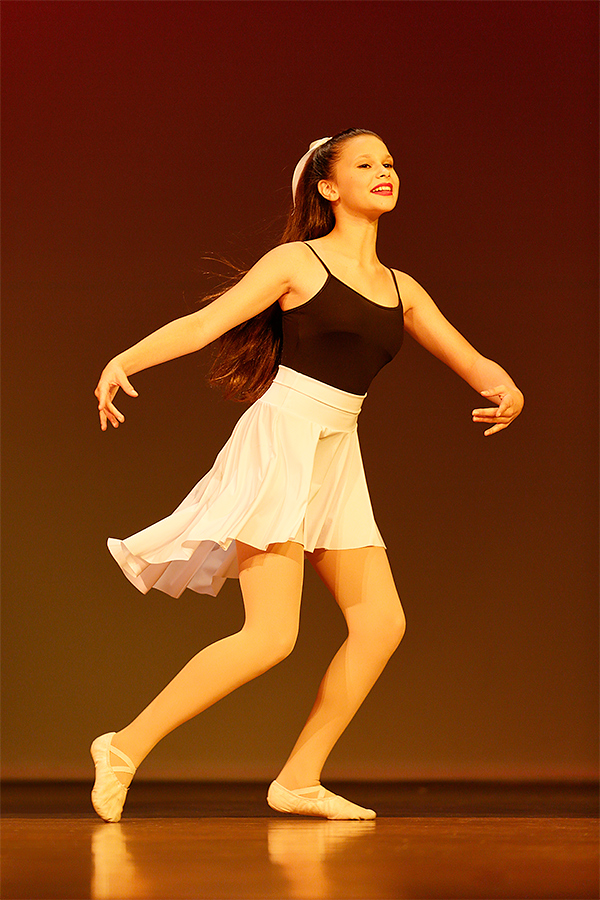
|
|
This image was created at the Hanken School of Dance Recital in Frostproof, FL on June 13 a while back with the hand held Canon EF 70-200mm f/2.8L IS II USM lens (at 125mm) and the Canon EOS 5D Mark III. ISO 800. Evaluative metering -1/3 stop: 1/640 sec. at f/2.8 in Av Mode.
Three AF points up from the center AF point/One Shot/Rear Focus Spot AF as framed was active at the moment of exposure (as is always best when hand holding). The active AF point was on Maya’s right shoulder. Click here to see the latest version of the Rear Focus Tutorial. Click on the image to see a larger version.
Image #9: Maya Dancing in white
|
The Hanken School of Dance Recital
My granddaughter Maya Egenstener, daughter of Jennifer and Erik, took dance lessons for about seven years. I would always bring a 70-200mm f/2.8 lens to the indoor performances. Maya is now living in Bushwick, NY near PS 106, the school that I taught in for more than two decades. She is making a living as a baker.
Typos
With all blog posts, feel free to e-mail or to leave a comment regarding any typos or errors
|
|




